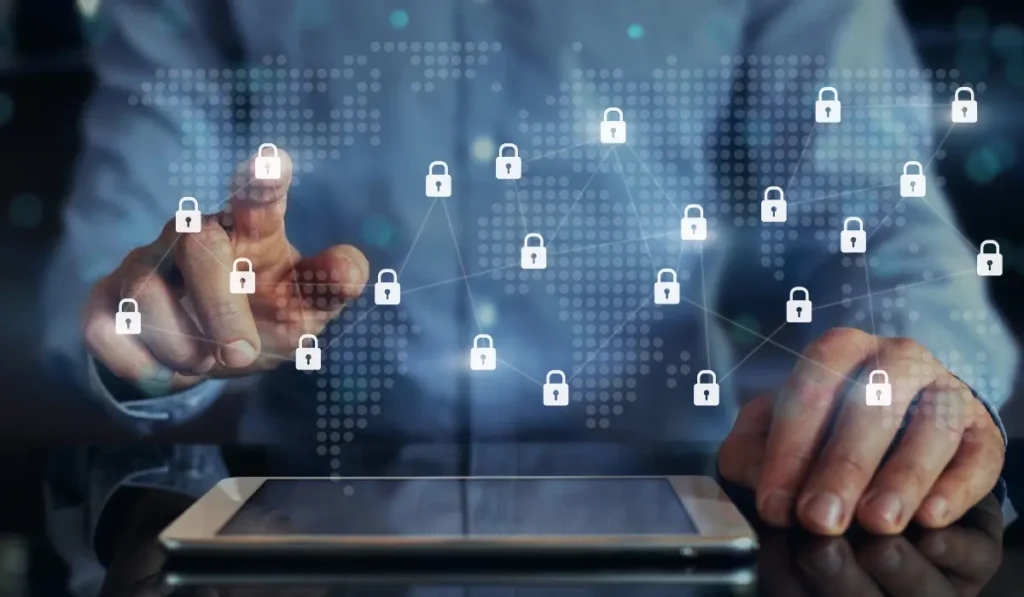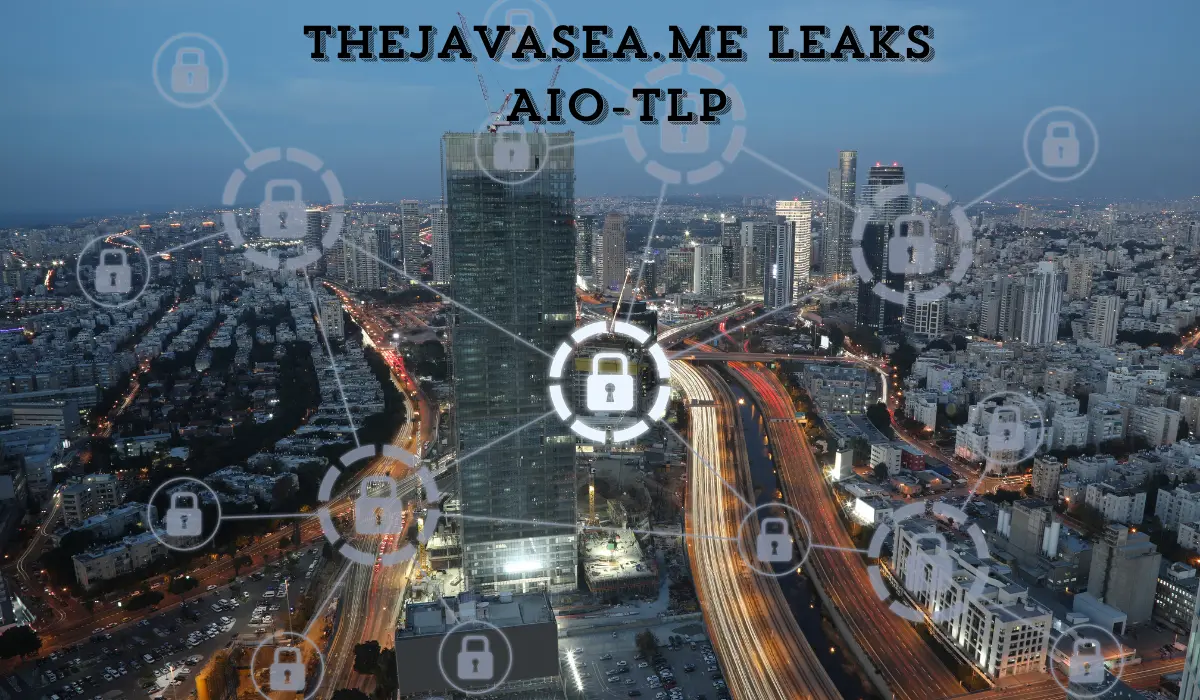TheJavaSea.me Leaks AIO-TLP: In an age where data is more valuable than ever, cybersecurity breaches have become one of the most alarming threats businesses, individuals, and even governments face. One of the most concerning recent leaks is the “AIO-TLP” exposure, which occurred on the dark web platform TheJavaSea.me. This incident has sent shockwaves through the cybersecurity community and beyond, raising concerns over the potential for mass exploitation of sensitive information.
TheJavaSea.me Leaks AIO-TLP
What is TheJavaSea.me?
TheJavaSea.me is a notorious platform on the dark web where hackers, cybercriminals, and other bad actors gather to share, sell, or exploit stolen information. While it is not widely known to the general public, it has gained prominence among cybersecurity professionals for facilitating the exchange of valuable and often illicit data. The platform has been linked to various data breaches, from the sale of credit card information to corporate espionage. It operates in relative anonymity, with its owners and users carefully shielding their identities.
The most recent scandal involving TheJavaSea.me is its connection to a widespread leak of AIO-TLP data, which has raised the alarm among cybersecurity experts worldwide.
What is AIO-TLP?
AIO-TLP stands for All-In-One Threat Level Protocol, a classification system for the sensitivity and handling requirements of various types of cybersecurity threat information. Originating from the Traffic Light Protocol (TLP) system, AIO-TLP is an extended version used by large organizations and intelligence agencies to manage sensitive information across multiple domains. The AIO-TLP categories range from open-source information meant for public sharing to highly classified data intended only for certain individuals within a tight security circle.
Given the nature of the information that AIO-TLP handles, it’s easy to understand why any breach involving these protocols is a matter of grave concern. It typically includes intelligence on cyberattacks, vulnerabilities in critical systems, and insider information about infrastructure that, if exposed, could lead to large-scale damage.
Read More: Recifest Embracing Renewal for a Sustainable Future
The Nature of the TheJavaSea.me Leaks AIO-TLP
The AIO-TLP leak on TheJavaSea.me involves the unauthorized access and distribution of sensitive data related to cybersecurity threats and defensive measures, some of which pertain to critical infrastructure sectors like energy, healthcare, and finance. While the specifics of how the data was stolen remain unclear, some theories suggest that the leak may have originated from compromised insider accounts, phishing attacks on security personnel, or an advanced persistent threat (APT) actor that infiltrated an organization’s system.
The leaked data includes highly classified TLP Red information—intelligence that is supposed to be shared only on a need-to-know basis among top-level officials and cybersecurity experts. This includes documentation about zero-day vulnerabilities, ongoing state-sponsored cyber operations, and critical infrastructure weaknesses. The potential misuse of this information could lead to catastrophic consequences, including attacks on power grids, hospitals, and financial institutions.
Immediate Impact of the Leak

The fallout from the AIO-TLP leak has been swift and severe. Several organizations have reported suspicious activities targeting their systems, including attempts to exploit vulnerabilities identified in the leaked documents. Moreover, the exposure of zero-day exploits—software vulnerabilities that are unknown to the vendor and have no patches—has prompted a race against time for cybersecurity teams to secure their systems.
Countries have also been quick to respond to the leak, with intelligence agencies issuing warnings to businesses and critical infrastructure providers. The U.S. Cybersecurity and Infrastructure Security Agency (CISA) and its European counterparts have published alerts urging organizations to be on high alert and take immediate steps to mitigate any vulnerabilities that may have been exposed. In particular, the healthcare and financial sectors have been placed on high alert, as both industries often face the brunt of cyberattacks in the wake of such data leaks.
At the same time, the leak has become a prime commodity on the dark web, with hackers and cybercriminals attempting to sell or barter the stolen information. The dark web marketplace is abuzz with activity, as actors with varying motives—from financial gain to political sabotage—vie for access to this sensitive data. The potential ramifications of this leak extend beyond the immediate targets of exploitation; the breach could lead to secondary attacks as malicious actors develop new attack vectors based on the compromised information.
Read More: 127.0.0.1:57573: A Comprehensive Review
A New Age of Cyber Threats?
This incident marks a turning point in the world of cyber threats. The scale of the AIO-TLP leak demonstrates the increasing sophistication of cybercriminals and their ability to compromise even the most secure systems. It also highlights the dangers of information aggregation in the digital age. By storing large amounts of sensitive data in a single location, organizations increase their vulnerability to catastrophic breaches.
The breach has also led to questions about the security of critical infrastructure and whether enough is being done to protect these vital systems. In the wake of the AIO-TLP leak, governments and organizations are likely to review their cybersecurity policies and procedures, especially regarding how sensitive information is classified and stored.
Lessons for Organizations
For businesses and organizations around the world, the AIO-TLP leak offers several critical lessons:
- Segmentation of Sensitive Data: Organizations should reconsider how they store sensitive information. Rather than aggregating all critical data in one place, a decentralized approach with strong segmentation and access control can limit the damage in case of a breach.
- Employee Training: Human error is often the weakest link in cybersecurity defenses. Comprehensive training programs for employees—particularly those handling sensitive information—can go a long way toward reducing the risk of phishing attacks and other social engineering exploits.
- Regular Audits and Threat Modeling: Periodic audits and threat modeling exercises can help identify weaknesses in an organization’s cybersecurity posture before an attack occurs. Organizations need to remain proactive rather than reactive in the face of ever-evolving cyber threats.
- Collaborative Security Efforts: As the AIO-TLP leak demonstrated, no one organization or country can tackle cybersecurity alone. International cooperation and information-sharing among government agencies, private companies, and cybersecurity firms are essential for countering large-scale cyber threats.
- Crisis Response Plans: Organizations should have robust incident response and crisis management plans in place. In the case of a data breach, time is of the essence. Rapid response and effective mitigation measures can significantly reduce the impact of a leak like the one involving AIO-TLP.
Future Implications
The AIO-TLP leak on TheJavaSea.me is likely to have far-reaching implications for the cybersecurity landscape. In the short term, we can expect a rise in cyberattacks, particularly targeting industries and organizations mentioned in the leaked documents. However, the long-term consequences could be even more significant.
We may see governments introducing stricter regulations on how sensitive data is stored and shared. Organizations, particularly those in critical sectors, will likely face increased scrutiny regarding their cybersecurity measures. Additionally, cybersecurity firms may develop new technologies and frameworks aimed at preventing similar breaches in the future.
The incident also underscores the need for a more robust global cybersecurity framework. While many countries have their own cybersecurity agencies and protocols, the interconnected nature of the digital world means that a breach in one country can have ripple effects across the globe. International cooperation, transparency, and trust will be essential in the fight against cybercrime.
Conclusion
The TheJavaSea.me Leaks AIO-TLP represents one of the most significant cybersecurity incidents in recent memory. It has exposed sensitive data that could be used for malicious purposes, ranging from financial fraud to attacks on critical infrastructure. For organizations worldwide, this leak serves as a stark reminder of the importance of robust cybersecurity measures and the need for constant vigilance.
As cyber threats continue to evolve, it is crucial for businesses, governments, and individuals to stay informed about the latest trends in cybersecurity and to take proactive steps to protect themselves. The Java Sea may be calm on the surface, but beneath the waves, there lies a dangerous undercurrent of cybercriminal activity—one that we must all be prepared to face.
FAQs
1. What is TheJavaSea.me?
TheJavaSea.me is a dark web platform where hackers, cybercriminals, and other malicious actors exchange, sell, or exploit stolen data. It’s known for facilitating various types of illegal activities, including the sale of personal, corporate, and government data, with a focus on anonymity for both sellers and buyers.
2. What does AIO-TLP stand for?
AIO-TLP stands for All-In-One Threat Level Protocol, an extended version of the Traffic Light Protocol (TLP) used to classify cybersecurity threat information. It includes highly sensitive data about potential vulnerabilities, cyber threats, and attacks on critical infrastructure.
3. What was leaked on TheJavaSea.me?
The leak on TheJavaSea.me involved highly sensitive AIO-TLP data, including TLP Red information meant for exclusive use by top cybersecurity experts. The stolen data includes zero-day vulnerabilities, sensitive intelligence on ongoing cyber operations, and security weaknesses in critical infrastructure sectors like energy, healthcare, and finance.
4. How was the AIO-TLP data stolen?
While the exact method of the breach is unknown, it is suspected that the data was obtained through advanced hacking techniques such as phishing, insider account compromise, or the infiltration of a secure system by an advanced persistent threat (APT).
5. What are the consequences of this leak?
The exposure of AIO-TLP data can lead to large-scale cyberattacks targeting critical infrastructure, financial institutions, and healthcare systems. The leak of zero-day vulnerabilities can result in the rapid exploitation of these weaknesses before organizations can patch their systems.
6. Which sectors are most at risk due to this breach?
The healthcare, finance, and energy sectors are most vulnerable, as they were mentioned in the leaked documents. These sectors often house critical infrastructure that, if compromised, can cause widespread disruption or even endanger lives.
7. What are zero-day vulnerabilities, and why are they dangerous?
A zero-day vulnerability is a software flaw that is unknown to the vendor and for which no patch or fix exists. These vulnerabilities are highly valuable to hackers because they can be exploited immediately, often before cybersecurity experts can develop and deploy a defense.
8. What should organizations do to mitigate the risks from this leak?
Organizations should take several steps, including:
Auditing their cybersecurity defenses for potential vulnerabilities exposed in the leak.
Implementing segmentation for sensitive data to limit the impact of any breach.
Training employees to recognize phishing and other social engineering tactics.
Collaborating with cybersecurity experts and intelligence agencies to stay updated on the latest threats.
9. How are governments responding to the AIO-TLP leak?
Governments have issued alerts through agencies such as the U.S. Cybersecurity and Infrastructure Security Agency (CISA), urging organizations to take immediate precautions. Some are also conducting investigations into the source of the breach, while others are increasing cybersecurity measures for critical infrastructure.
10. How does this leak affect the general public?
Although the general public may not be directly impacted, the leak poses serious risks if critical infrastructure is attacked. For instance, disruptions in healthcare or energy services could lead to life-threatening situations or significant economic loss. Individuals should also remain vigilant about their personal cybersecurity practice

